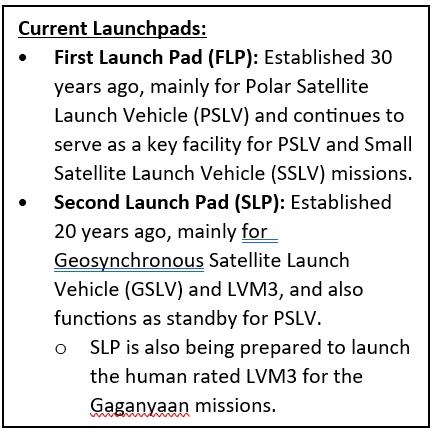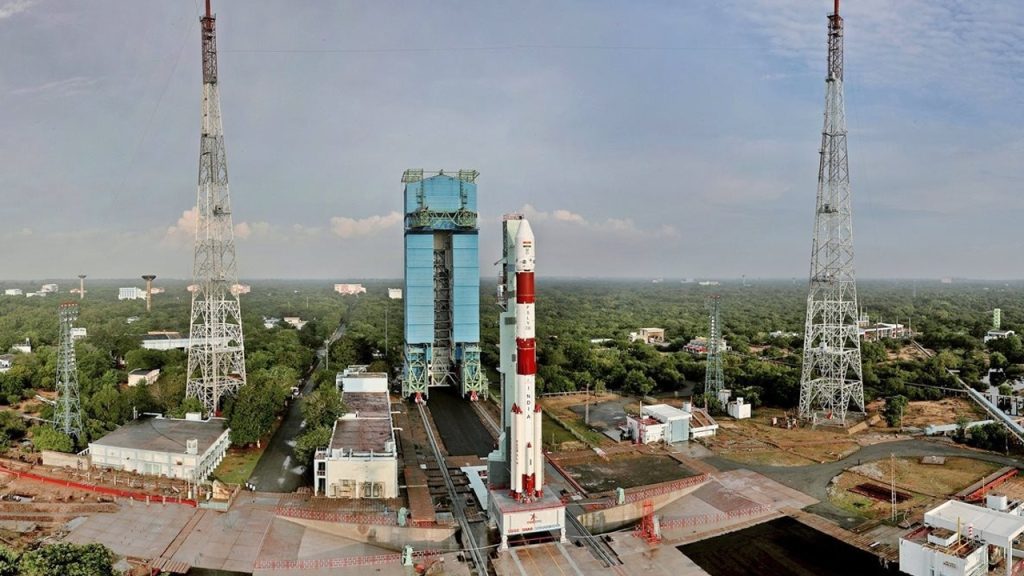Context:

Recently,the Union Cabinet has approved the establishment of the Third Launch Pad (TLP) at the Satish Dhawan Space Centre in Sriharikota, Andhra Pradesh.
Key points about the TLP:
The project will enhance India’s space launch capabilities, particularly for human spaceflight missions, aligning with India’s evolving space exploration goals.
- Purpose:
- To establish infrastructure for the Next Generation Launch Vehicles (NGLV) and LVM3 (Launch Vehicle Mark-3, a medium-lift launch vehicle) with a Semi-cryogenic stage and also for scaled-up configurations of NGLV.
- To serve as a backup for the existing Second Launch Pad (SLP).
- To augment the overall launch capacity for future Indian human spaceflight missions and deep space exploration.
- The expanded vision of the Indian Space Programme during the Amrit Kaal includes: –
- Bharatiya Antariksh Station (BAS) by 2035
- Indian Crewed Lunar Landing by 2040
- Both of the above require a new generation of heavier launch vehicles with new advanced propulsion systems, which cannot be met by the existing launch pads
- TLP will be co-located with the second launch pad (SLP), maximising the use of existing infrastructure.
- Total Expenditure expected is ₹3984.86 crore and the project is targeted for completion within 48 months (4 years).
Impact and Benefits:
- Boost to Indian Space Ecosystem: The new launch pad will increase the frequency of space launches thus providing significant momentum to India’s space program.
- Support for Future Missions: The infrastructure will be essential for the Gaganyaan human spaceflight mission and other ambitious interplanetary space missions.
- Employment and Industry Participation: The project will involve significant industry participation, leveraging ISRO’s experience in launch pad development.

